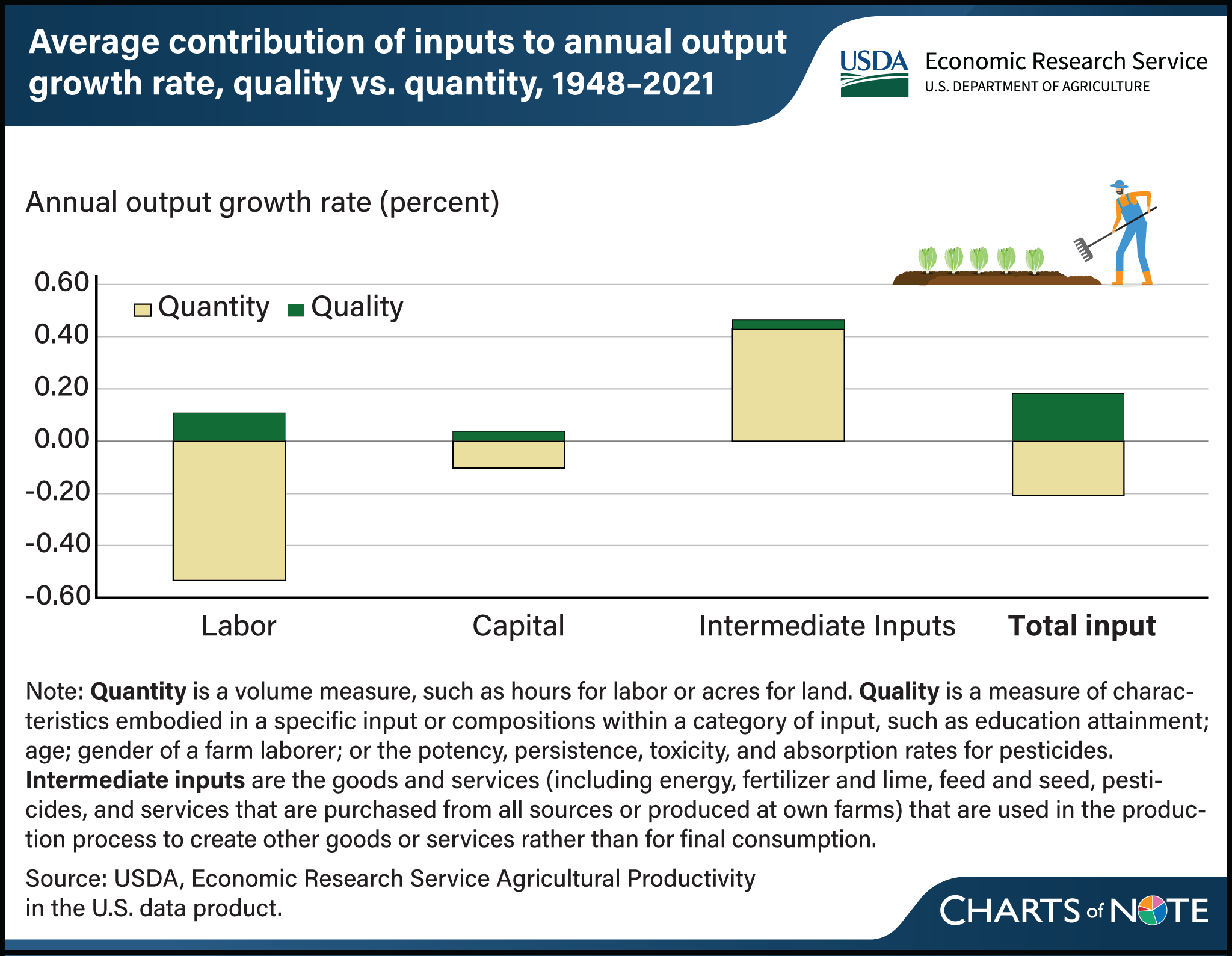Increased input quality has contributed to output growth in U.S. farm sector
- by Sun Ling Wang
- 9/9/2024

Over time, the inputs used in producing the U.S. farm outputs have shifted from land (categorized as part of capital) and labor toward intermediate inputs, such as fertilizers, pesticides, energy, and purchased services. Meanwhile, the quality of agricultural inputs has improved in all three categories—labor, capital (land, as well as machinery and farm buildings), and intermediate inputs. For example, fertilizers containing nitrogen, phosphorus, and potassium have undergone significant changes in quality over time, making them more effective. Pesticides also have improved potency, persistence, toxicity, and absorption rates. Further, workers in the agricultural labor pool now have attained higher education levels. As for capital, technological developments have allowed farm operators to replace obsolete machinery with more efficient capital assets. USDA, Economic Research Service (ERS) researchers tracking these improvements in input quality have found that labor quality increases contributed 0.11 to the 1.46-percent average annual output growth rate between 1948 and 2021 (compared with the reduction in labor quantity contribution of -0.42 percent). Quality improvements in capital and intermediate inputs contributed 0.04 percentage points each toward the output growth. While capital inputs show reductions in quantity, mostly from the decline in land use, the use of intermediate inputs has increased. Advancements in input quality and shifts away from inputs like labor and land to intermediate inputs mostly offset the decline in total input use, leaving total input with a -0.03 percent decrease per year during the study period. The major factor that allows the sector to produce greater output despite fewer inputs than in the past is the gain in total factor productivity (TFP), advanced by technical change in genetic improvement in livestock and crops, as well as efficiency change through improved farm management and practices. This chart appears in the ERS technical bulletin Measurement of Output, Inputs, and Total Factor Productivity in U.S. Agricultural Productivity Accounts, published in August 2024.

